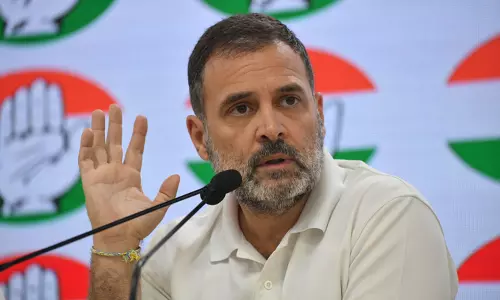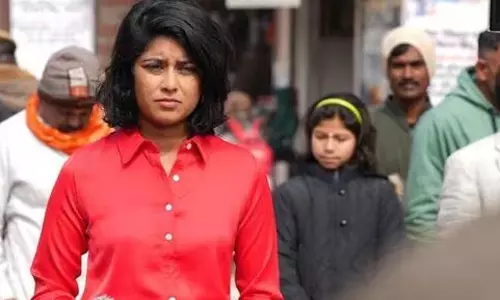
AAP in trouble?
text_fieldsThe Aam Aadmi Party (AAP) or the common man’s party had set off huge expectations when it was formed on 26 November 2012 by Arvind Kejriwal.
Kejriwal who represented and projected the interests of the ‘common man’, won appreciations and triggered hopes of new political awakening through his ‘clean politician’ image and the credibility he earned through his anti-corruption programs. AAP factions were formed all across the country with activists, intellectuals and retired officials joining the party. The party got immense support from the people especially the minorities giving an impression of making a major headway in the Lok Sabha elections. AAP was seen as a party that united people from all sections contrary to the usual approaches of BJP and similar parties who divided the people among sectarian lines.
The party had earlier invited critisims when Kejriwal resigned as the Chief Minister of Delhi after 49 days in power. Kejriwal and his party assumed that dissolving the government would create an impression that the party was not craving for power as the others. The BJP and the Congress termed him a quitter (Bagoda) and played up the situation well blaming Kejriwal for being ignorant of the governance and practical politics. The AAP had emerged as the second largest party after the BJP in the Delhi elections in December 2013. The party again made a stunning comeback through the Delhi Legislative Assembly polls in 2015 winning 67 out of the 70 seats available and reducing the BJP to just 3 seats and Congress to zero. It was seen as an end of “Modi wave” and a huge blow to the fascist BJP government.
But recent incidents of wide rift inside the party have raised skepticism in the minds of people. Despite the huge victory in the polls, internal conflicts and deep factionalism in the party have been revealed in less than a month after coming to power. shazia Ilmi who resigned from AAP had said that the party “lacked internal democracy”. Prashant Bhushan and Yogendra Yadav, the founding members of the party were recently removed from the key decision-making political affairs committee (PAC). The senior Ministers have accused them of allegedly aiding anti-party activities trying for the party’s defeat in the Delhi elections. Twitter campaigners were launched against Bhushan and Yadav by the AAP Ministers in Delhi. The Ministers have also questioned Kejriwal’s authoritarian style of functioning. He was earlier targeted by the members for his ‘dictatorial style of running things and lack of transparency’. Adding to the rift, another senior leader Anjali Damania also resigned from the party following allegations of ‘horse-trading’ against Kejriwal. In the statements released, the Delhi CM was accused of garnering Congress support for forming a government in Delhi.
The AAP may have upheld principles of anti-corruption and value politics. But with the recent incidents, questions are being raised at the ‘anti-corruption’ label of the party. The newly formed political party lacks the adequate political education to comprehend the existing social realities. The two people removed from the making panel have played a significant role in imparting this realization to the party. But the latest moves point towards a not-so-good future for AAP. There are also chances of people losing faith in the government. The mistakes made by AAP out of ignorance and over-enthusiasm to make an impact have led to the present situation. The sooner the people responsible rectify them, the better.























